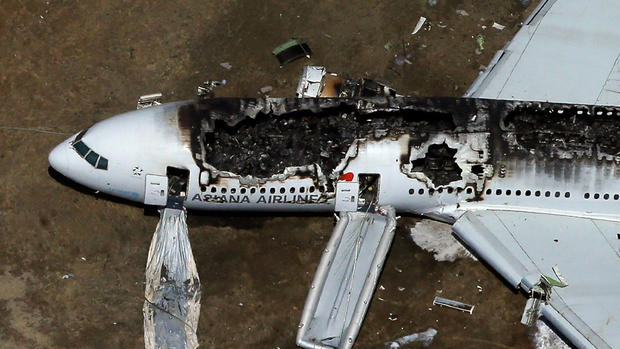Automated flying creating new errors, NTSB chief says
WASHINGTON - Increasingly complex automated aircraft controls designed to improve safety are instead creating new opportunities for error, the head of the U.S. National Safety Board said Tuesday at a hearing on the crash last year of Asiana Flight 214 in San Francisco.
The Asiana flight crew "over-relied on automated systems that they did not fully understand," said Chris Hart, the NTSB's acting chairman.
"In their efforts to compensate for the unreliability of human performance, the designers of automated control systems have unwittingly created opportunities for new error types that can be even more serious than those they were seeking to avoid," Hart said.
The five-member board is scheduled vote on the probable cause of the Asiana crash, the only fatal passenger airline accident in the U.S. in the last five years.
Among the other issues raised by the investigation are some that long have concerned aviation officials, including hesitancy by some pilots to abort a landing when things go awry or to challenge a captain's actions.
The irony of the accident is that it occurred at all. Three experienced pilots were in the cockpit on July 6, 2013. The plane, a Boeing 777, had one of the industry's best safety records. And weather conditions that sunny day were near perfect.
But the wide-bodied jetliner with 307 people on board was too low and too slow during the landing. It struck a seawall just short of the runway, ripping off the tail and sending the rest of the plane spinning and skidding down the runway. When the shattered plane came to rest, a fire erupted.
Despite the violence of the crash, only three people were killed - Chinese teens seated in the back who may not have been wearing their seatbelts and were thrown from the plane.
"It's so important to make sure you're restrained every time," former NTSB chairman Deborah Hersman said on "CBS This Morning." "It's so low-tech, a seat belt, but a huge life saving measure."
One of the teenage girls survived the crash but was run over by two rescue vehicles in the chaos afterward. Nearly 200 people were injured.
In documents made public by the safety board, Asiana acknowledged the likely cause of the accident was the crew's failure to monitor and maintain the plane's airspeed, and its failure to abort the landing when in trouble. The South Korea-based airline said the pilot and co-pilot reasonably believed the automatic throttle would keep the plane flying fast enough to land safely, when in fact the auto throttle was effectively shut off after the pilot idled it to correct an unexplained climb earlier in the landing.
Asiana said the plane should have been designed so that the auto throttle would maintain the proper speed after the pilot put it in "hold mode."
Boeing had been warned about the problem by U.S. and European aviation regulators. Asiana urged the safety board to recommend that the aircraft maker be required to include an audible warning to alert pilots when the throttle changes to a setting in which it no longer is maintaining speed.
"Asiana has a point," said John Cox, a former airline pilot and aviation safety consultant, "but this is not the first time it has happened. Any of these highly automated airplanes have these conditions that require special training and pilot awareness. ... This is something that has been known for many years and trained for many years."
Boeing told the board there was nothing wrong with the plane, and the crash was caused by the failure of the pilots to maintain speed and to abort the landing when the approach had become unstable, as required by their company's policies. An unstable approach occurs when a plane's speed or rate of descent is too fast or to slow, or the plane isn't properly aligned for landing.
Captain Lee Kang Kuk, 45, a veteran pilot who was new to the 777, was flying the plane. Because an airport navigational aid that helps planes land wasn't working that day, Kuk was flying a visual approach that involves lining up the jet for landing by looking through the windshield and using numerous other cues, rather than relying on a radio-based system called a glide-slope that guides aircraft to the runway. A training captain was sitting next to him in the right seat watching his performance.
Kuk told transportation accident investigators that he did not immediately move to abort the landing after it became unstable because he felt only the instructor pilot had that authority. Cockpit culture in which the senior captain is viewed as supreme was identified as a factor in several South Korean airliner crashes in the 1980s and '90s. Afterward, procedures and hierarchies were overhauled in Korea and elsewhere, including the U.S.
